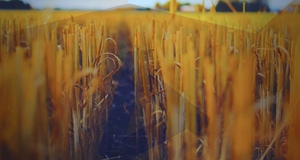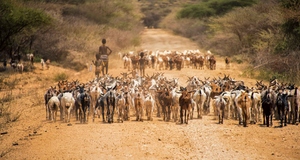From Earth Common Journal VOL. 3 NO. 1Roots, Tendrils, Sprouts and Shoots: A Case Study of Parkallen's Community Garden, a Permaculture ProjectTendrils and ShootsIn my experience building the garden hasn’t been just about moving dirt around. It has been a much greater task of creating and nurturing networks and relationships. By a somewhat mysterious process to me, it seems that networks and relationships are created and nurtured most effectively, however, by being in the garden moving dirt around. That is where I discovered my neighbour’s kid digging organic carrots and potatoes to bring home to his mom while she was fighting for her life undergoing chemotherapy. That is where I gave the single-mom and her daughter up the street permission to pick as much kale as they wanted when they told me they’d been ogling it for months. That is where I met the gardener across the street who started the Edmonton’s Grow a Row for the Foodbank campaign. She crossed the street to ask me if I wanted to split a truckload of compost. That is where a woman stopped and hopped off her bike to tell me how much she loved seeing the garden every day and how she took the long way to work just to look at it. “Take home something to eat,” I called after her. “No! I couldn’t! I just love to look at it!” she replied. Permaculture encourages gardeners to view a garden space as designed for people’s use and enjoyment; gardens should not be designed to use people, nor to use up natural resources in a way that is unsustainable. Conserving your effort, your money and the environment are mutual goals in a permaculture garden. Before constructing our garden with no individual plots, no fences, and no signs saying what not to do, so many naysayers told us it would never work. “You’ll do so much and get nothing in return because some jerk who didn’t lift a finger will raid your garden. You’ll see.” In fact, the reverse is true. It has been much more difficult to convince people that they deserve to take home some garden produce than to prevent people from taking too much. And while I have done so much work, yes, more than I would have bargained for, it isn’t true that I’ve gotten nothing in return. I’ve come to the garden for just a few leaves of basil and oregano and, after getting lost in the task of dead-heading edible flowers, left with a feeling of wellness and peace. Conclusion“Our sunflowers are visible from space,” one of the PCG’s co-directors pointed out to me the other day. We were grudgingly collaborating on an addendum to a report about our garden bylaws, regulations and procedures, when we found ourselves looking down on the garden via Google Earth via my laptop. It’s true, and it’s surreal: you can see those sunflowers from space. I am proud to see them beaming back at me. In a way, I made that, I made them happen. But on a fundamental level, I know that I haven’t really made the Parkallen Community Garden grow. I’ve planted things there. I’ve asked for and received grant funding. I’ve reached out to my neighbours and asked them to garden with me. But mostly, the multiple points of connection just keep sprawling out from the soil like pumpkin vines, sending tendrils in every direction they can. Our job as gardeners seems to be mostly about looking under leaves to see what’s appeared there on any given day. What fascinates and motivates me most of all is all the work the garden does on its own. A girl is handed a seed, she pokes it into the earth, and the rain and the sun and the soil do the lion’s share of the work. If you let them, they really do. ReferencesEdmonton Federation of Community Leagues (2010). Green Challenge. http://www.efcl.org/EFCLActivitiesOverview/MemoryLane/GreenChallenge09-10/tabid/190/Default.aspx City of Edmonton, Department of Transportation. (2009). Parkallen Community Local Motion Field Guide. [Brochure]. Retrieved from: http://www.edmonton.ca/transportation/Field_Guide_to_LocalMotion.pdf City of Edmonton. Stay Inside the Lines: Protecting Edmonton’s parks and natural spaces for everyone. [Brochure]. Retrieved from: http://www.edmonton.ca/environmental/documents/PDF/stay_inside_the_lines. pdf City of Edmonton (2013). Parkallen Community Development Plan. Retrieved from: http://www.edmonton.ca/city_government/documents/Parkallen_CDP_May_2013.pdf City of New York. Retrieved from: http://www.centralparknyc.org/about/ Clavin, A. (November, 2011). Realising ecological sustainability in community gardens: a capability approach. Local Environment, 16(10), 945-962. Kirchner, Robert. (2011). About the Parkallen Community Garden. Retrieved from: http://parkallendiggers.org/about/ N. A. Mecham & L. R. Joiner. (2012). “Even If We Never Ate A Single Bite Of It; It would Still Be Worth It:” College Students’ Gardening Experiences. Journal of Ethnographic & Qualitative Research, 6: 231-242. Praetorius, Patrick. (2006). Teaching Through Permaculture Experience. Connect, Nov Dec: 6-9. Shein, C. & Thompson, J. (2013). The Vegetable Gardener’s Guide to Perma-Culture: Creating an edible ecosystem. Portland: Timber Press. Roth, C. (2011). Permaculture 101. Communities, 153: 10-12. Trewavas, Anthony. (2004). A critical assessment of organic farming-and-food assertions with particular respect to the UK and the potential environmental benefits of no till agriculture. Elsevier: 23: 757-781. Turner, Henryks & Pearson. (2011). Community gardens: sustainability health and inclusion in the city. [Editorial]. Local Environment 16(6): 489-492. Suggested Reading from Inquiries Journal
Inquiries Journal provides undergraduate and graduate students around the world a platform for the wide dissemination of academic work over a range of core disciplines. Representing the work of students from hundreds of institutions around the globe, Inquiries Journal's large database of academic articles is completely free. Learn more | Blog | Submit Latest in Environmental Studies |

















